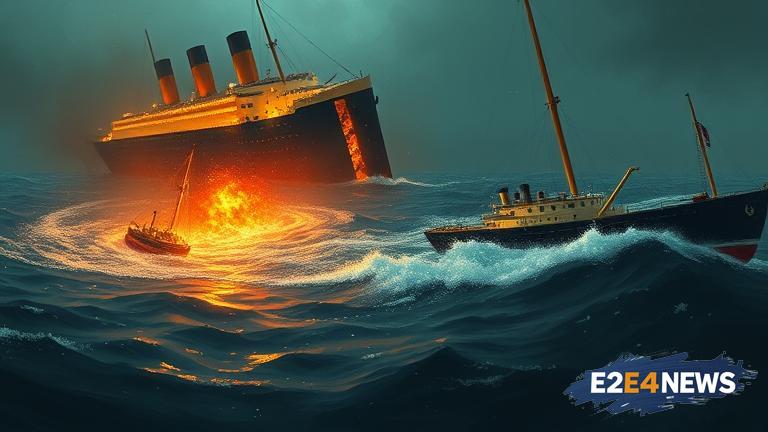The Coast Guard’s investigation into the Titan submersible disaster has shed new light on the circumstances surrounding the tragic event. On June 18, 2023, the Titan submersible imploded while on a dive to the Titanic wreck site, resulting in the loss of five lives. The investigation revealed that the disaster was preventable and was caused by a combination of human error and technical failures. The submersible’s manufacturer, OceanGate, had been warned about the potential risks of the vessel’s design, but failed to take adequate measures to address them. The investigation also found that the submersible’s crew was not adequately trained, and that the vessel was not properly maintained. The Coast Guard’s report highlighted a number of safety concerns, including the use of untested and unproven materials in the submersible’s construction. The investigation also revealed that the submersible’s pressure hull was not designed to withstand the extreme pressures of the deep ocean. The Coast Guard’s findings have sparked widespread outrage and calls for greater regulation of the submersible industry. The tragedy has also raised questions about the safety of deep-sea tourism and the risks associated with exploring the ocean floor. The Titanic wreck site, which is located over 12,000 feet below the surface of the ocean, is a particularly challenging environment for submersibles to operate in. The extreme pressures and near-freezing temperatures make it a hostile environment for both humans and equipment. The Coast Guard’s investigation has highlighted the need for greater safety protocols and regulations to be put in place to prevent similar tragedies from occurring in the future. The submersible industry has come under scrutiny in recent years, with a number of high-profile accidents and incidents raising concerns about safety. The Titan submersible disaster is the latest in a series of tragic events that have highlighted the risks associated with deep-sea exploration. The Coast Guard’s report has also sparked a debate about the ethics of deep-sea tourism and the impact that it has on the environment. The Titanic wreck site is a protected area, and there are concerns that the increasing number of submersibles visiting the site is causing damage to the wreckage and disrupting the surrounding ecosystem. The Coast Guard’s investigation has also raised questions about the role of regulation in preventing similar tragedies from occurring in the future. The submersible industry is largely self-regulated, with companies setting their own safety standards and protocols. However, the Coast Guard’s report has highlighted the need for greater oversight and regulation to ensure that submersibles are operated safely and responsibly. The Titan submersible disaster is a tragic reminder of the risks associated with deep-sea exploration and the importance of prioritizing safety above all else. The Coast Guard’s investigation has provided a detailed and comprehensive account of the events leading up to the disaster, and has highlighted the need for greater safety protocols and regulations to be put in place. The report’s findings have sparked widespread outrage and calls for greater accountability from the submersible industry. The tragedy has also raised questions about the future of deep-sea tourism and the impact that it has on the environment. As the investigation continues, it is clear that the Titan submersible disaster will have far-reaching consequences for the submersible industry and the future of deep-sea exploration.





